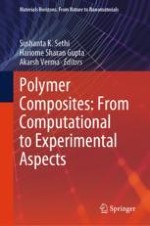2024 | OriginalPaper | Chapter
3. Multiscale Modelling of Polymer Composites
Authors : Dheeraj Gunwant, Neeraj Bisht
Published in: Polymer Composites: From Computational to Experimental Aspects
Publisher: Springer Nature Singapore
Activate our intelligent search to find suitable subject content or patents.
Select sections of text to find matching patents with Artificial Intelligence. powered by
Select sections of text to find additional relevant content using AI-assisted search. powered by
